Delicious! I don’t know where VCI Entertainment is on putting out Blu-rays of their previous DVD releases, but surely Honey West: Complete Series should be on such a list.
Click to order Honey West: Complete Series at Amazon.
Your purchase helps pay the bills at this website!
Sexy, sophisticated, and delightfully funny, ABC’s Honey West, starring heartbreaker Anne Francis and handsome hunk John Ericson, fulfills all the requirements of a true TV “cult” item: it didn’t last long (just one season in 1965); it was out of circulation for decades; and it’s far better than anyone thought when it first premiered. Fresh, light, and charming, Honey West hit American airwaves before The Avengers’s Mrs. Peel, knocking everybody for a loop with her deadly judo moves and her crippling good looks. It’s breezy, stylish, inventive escapist fare which plays very well today, thank you.
By Paul Mavis
Based on a series of pulpy thrillers by authors Skip and Gloria Fickling (pen name: G. G. Fickling), Honey West the TV series began as a potential spin-off pilot episode on executive producer Aaron Spelling‘s other ABC detective series, Burke’s Law. In the episode, Who Killed the Jackpot?, chic private detective Honey West (Anne Francis) and her he-man partner Sam Bolt (John Ericson) engage in a battle of wits against millionaire police detective Amos Burke (Gene Barry) to solve the murder of a wealthy banker—with Honey winning out over the cagey, dapper Captain Burke. Reaction to the episode was strong from ABC, and Spelling was given the go-ahead for a full 30 episode order of Honey West for the Fall 1965 season.

In the series proper, Honey West is the deliciously sexy, glamorous owner of a private investigation firm, a firm she inherited from her deceased father, who was one of the top private dicks in Los Angeles. While Honey’s obvious charms are instrumental in aiding her investigative work (the criminals have a tendency to go all goofy when they get a load of that bod), she doesn’t rely on her devastating looks alone. She’s smart and tough, too, with a black belt in both karate and judo, a proficiency with an assortment of small arms and other deadly weapons, along with expertise in sophisticated electronic surveillance—the hallmark of her detective skills.

Her partner, Sam Bolt, provides all the electronic gadgets that Honey requires for her investigations—as well as a continuous stream of warnings about Honey’s impulsiveness that fall on Honey’s deaf ears. Frequently trailing behind Honey’s white convertible AC Cobra in a mocked-up Ford Econoline van (“H.W. Bolt & Co. TV Service”), filled to the brim with complicated eavesdropping equipment, Sam plays back-up to Honey’s lead all the way, providing some necessary extra muscle whenever Honey gets into too tight of a jam. Back at her swank L.A. office, a hidden panel reveals Honey’s elegant, well-appointed apartment, which she shares with her jaunty, carefree Aunt Meg (Irene Hervey), and her pet ocelot Bruce, who has a penchant for playfully attacking anyone who happens near him.
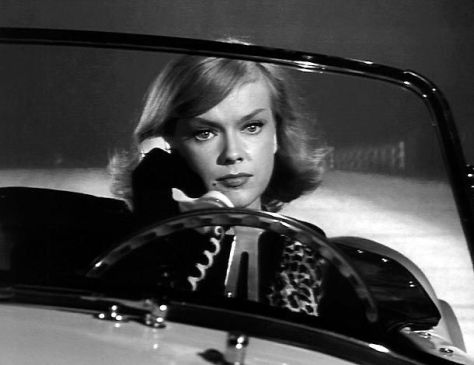
Very often a TV lover can come to a much talked-about “cult” series late in the game, and be disappointed with the title—particularly if that viewer didn’t grow up watching the show when it first aired. There is something to be said for being immersed in a show’s milieu during its original run. There’s an appreciation of context—along with a nostalgia factor ingrained when you’re younger—that can cement a show in a viewer’s imagination in a way a newcomer might not understand or perceive.

I don’t remember Honey West being rerun when I was a kid (perhaps it did…but I’m betting that only 30 episodes didn’t make it an attractive syndication buy), but I’ve seen numerous references to it throughout my studies, and it more than matched all the years of hype. Growing up on endless reruns of The Avengers (the cult British spy series imported to ABC that would make low-rated Honey West irrelevant for the network), I can’t say that Honey West is better than that landmark, groundbreaking U.K. show…but it is very clever and smart and chic, and very enjoyable on a jokester, flipper-than-thou level that I found quite refreshing.

According to a couple of sources I’ve read, executive producer/TV mastermind Aaron Spelling (Charlie’s Angels, The Love Boat, Dynasty) reportedly was well aware of the British black and white The Avengers episodes starring Honor Blackman (the early episodes that didn’t make it to U.S. shores). He reportedly offered Blackman a starring role in a U.S. series (probably Honey West), an offer she turned down to star in Goldfinger.
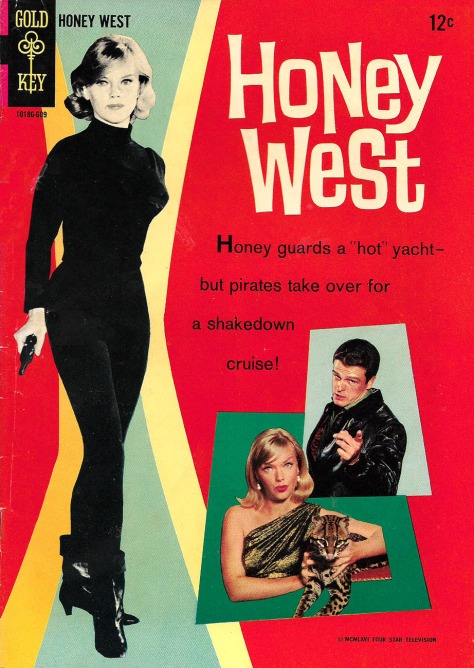
Whether that story is true or not, it’s certainly likely that Spelling was at least aware of the sensation that The Avengers and Blackman’s character was causing over in England (no doubt he knew of his home network’s financial involvement with the show, too, predicated on it eventually coming to U.S. shores). It’s not hard to imagine the cagey producer wanting to jump on the Bondmania bandwagon that was sweeping the world. Only Spelling’s karate-chopping action star wouldn’t be a hero…but a heroine.

Certainly the character of Honey West wasn’t TV’s first independent woman, or even its first female private detective. But she was the first TV action heroine (in the U.S. TV market, at least) to be modeled specifically after her male counterparts: namely in this case, James Bond. And even more importantly, she was the star of the show. In no way did Honey “answer” to her bigger, stronger, hotheaded partner Sam. It was her name on the agency, and she ran it her way, despite Sam’s constant hectoring for her to play it safe and let him protect her. Not that she needed his protection. Equally skilled in the martial arts, Honey could keep up with Sam in hand-to-hand combat, small weapons proficiency, and in utilizing all those tricky little gadgets Sam thought up for audio and video surveillance.

And she did it all while being a most…aggressively erotic woman—something that TV audiences regularly tuning into the housewives on Bewitched, The Dick Van Dyke Show, and The Lucy Show didn’t see as a lead character in a weekly series. That kind of thoroughly independent, sexualized woman (while importantly not being punished for her looks and appetites) was a first for American TV audiences. Mrs. Emma Peel would have a bigger, longer-lasting impact, but Honey West was there on American TVs first.

That uniqueness of the Honey West character is a big draw for the series. If you’re at all familiar with the way the world “looked” on network TV in the 1960s, a woman like Honey West wasn’t exactly a common sight. A self-sufficient businesswoman who answered to no one when it came to spending her own apparently more-than-adequate income; a highly desirable woman who freely chose not to engage in any long-term romance (even though she had a more-than willing partner/stud in the form of admiring Sam, with whom she may or may not have slept with), and a woman who could not only hold her own with a man in a fight, but nine times out of ten, beat him senseless—that had to be a hell of a wake-up call for complacent, dreamland TV viewers of 1965. To put a point on it: Honey West doesn’t need you, sir. She’s quite capable and happy to live her life on her own terms—man-free. She doesn’t need you to protect her (like Sam is always trying unsuccessfully to do); you don’t need to tell her where to go, or what to do, or how to spend her money. She’s got that under control, thank you; now run along, little man, or you may get a karate chop to the neck.

Now take that kick-ass, “I don’t need you to make my life complete” attitude, and wrap it around one of the most achingly sexy actresses to ever grace the small screen, and you start to get an idea of the appeal of Honey West. Because whatever political and sociological significance Honey West might have (and let’s not get crazy on that point; in the end, it’s still just a TV show, after all), it’s a whole lot of fun, too, and a big percentage of that enjoyment comes from watching the entirely delectable Anne Francis “act” entirely delectable.
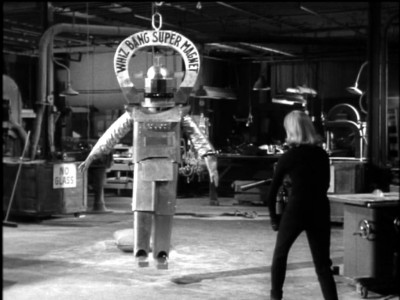
Francis, always known as a looker (her appearance as the willowy Altaira in the classic, Forbidden Planet, still makes sci-fi geeks swoon), steps up to genuine pop icon status, though, with her turn as Honey West. She gives off a perceptible heat here that’s unusual indeed for a light caper series from the 1960s. Usually clad at least once per episode in her trademark form-fitting black cat burglar outfit (to jaw-dropping effect), not a little part of Honey West seems to be, “How can we cram as many shots of Anne looking totally hot into each episode?”—and that’s fine by me (this is certainly a Spelling trademark he would exploit to its fullest on Charlie’s Angels).
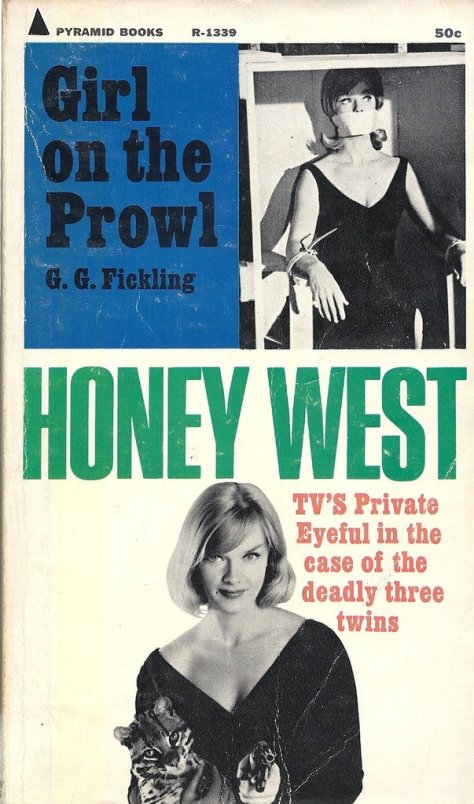
But anyone can just “look” good; Francis knows she looks good. And even better; she knows you know she looks good, and she apparently is delighted in the attention. Never once self-conscious or demure, Francis’ Honey West is supremely confident in those scenes where the main focus is obviously sex appeal, and thank god she is…because she can pull it off.

But lest you think Honey West is all politics and smoldering heat, it isn’t. It’s actually quite light and flip and fun, with a teasing, knowing attitude to it that seems much more modern than most network shows from that period. A good example is Honey’s relationship with Sam. Long before Moonlighting‘s “will they or won’t they” (I think the Honey West creators have a good case of plagiarism there), viewers are left to wonder what, exactly, is going on between these two attractive business partners.
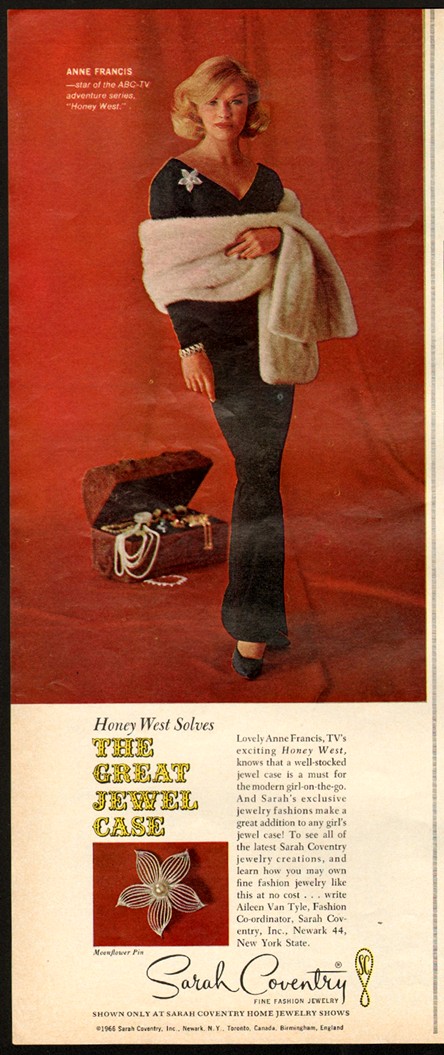
Sam certainly makes no bones about wanting to sleep with Honey; in early episodes, he’s clearly on the make for her. And Honey likes the attention. In the opening episode, there’s even the suggestion that they spent the night together (and in other episodes, they are frequently close, physically, with each other). But just as often, Honey is swatting down Sam’s advances…or going out to dinner with him. Neither has a steady romantic partner, so what exactly goes down behind that secret panel in her office? We don’t know, and that’s part of the fun puzzle here. Ericson and Francis are animated and playful together in their scenes, and their jaunty/teasing sexuality adds a nice twist to the proceedings (expertly picked up and amplified by the presence of rowdy, clawing, biting Bruce the ocelot, who delightfully attacks anyone who sits next to him, craving their attention).

The physical make-up of the show is equally inventive and bright. With Honey West‘s half-hour format, there isn’t time for a lot of deep characterizations or wordy exposition. It has only so many minutes to grab you, and on the whole, it succeeds quite nicely, with a comic-book style of editing and routinely novel direction that again sets this series apart from similar fare at that time. At times almost cartoonish in its energy, Honey West‘s fascination with the trappings of Bondmania (exploding devices, electronic surveillance, hand-to-hand combat, fast cars, beautiful women, weaponry, pre-credit sequence setting up the story) translates into action-filled, 25-minute little B-programmers that sport some surprisingly clever touches.

For instance, in each episode, there’s always at least one instance of a cut on the last word of a sentence that leads to a funny or ironic new scene or image—a laugh-getter that’s a luxury in the editing schemes of most locked-down, rigid network TV fare of that time. Self-reflexive moments come often in Honey West, from the actors constantly discussing television shows (“I wonder what kind of ratings it gets,” had to be tough to deliver, considering Honey‘s own failing ratings), to Honey pulling down an imaginary shade (which is really a wipe for the scene) to block out viewers watching her sleep, to even Honey doing a double take at her very own action figure doll (ABC clearly believed in this series; there was a remarkable amount of product merchandising associated with it).

Of course there are the usual continuity howlers we expect from 1960s TV, such as too obvious stunt doubles doing all the dirty work, or the fact that Sam gets hit over the head in just about every episode. But due to the almost comic strip nature of the show, those stretches of reality work in the show’s favor. Honey West is, after all, just a big gag.

There are drawbacks to Honey West, though, that probably kept it from achieving any lasting success. First and foremost: if any series cried out for color, it has to Honey West. While black and white series still were showing up on network schedules, their days were definitely numbered by 1965, and certainly the format and style of Honey West demanded color (something the newly relaunched The Avengers—with American money—would get when it came to ABC, pushing out the retro-looking Honey West).

The half-hour format, while invigorating when you’re trying to make something Pop-y and fun, can also reveal the cracks in characterizations. There’s not a lot of room to move for the leads in Honey West. While I personally love the almost surreally vague nature of slightly daffy Aunt Meg’s presence in Honey’s apartment (who exactly is she? What does she do there? Where does she go when she disappears, only to inexplicably pop back into a scene again?), I can see where some viewers might find her shadowy character perplexing. There simply isn’t enough time in the half hour show, or room with the two leads, to flesh out her character.
With the shorter time frame, it can be difficult to work up a convincing mystery, too. Certainly Honey West is style over substance, and for the most part, many of the mysteries are surprisingly entertaining (future Columbo creators Richard Levinson and William Link deliver several excellent scripts here). But clunkers begin to appear towards the end of the run, and one suspects that the juvenile influence of ABC’s ratings phenomenon that 1965-1966 season, Batman, was steadily pushing out Honey West‘s original Avengers inspiration. Soon, Honey and Sam, instead of battling each other on the dance floor or trading sexy quips over their forever-negotiated romance, are fighting the gorilla from Gilligan’s Island; tracking down a jewel-thief Robin Hood in Sherwood Place, and battling the robot from Gilligan’s Island (in another episode, there’s a beach party…right at Gilligan’s lagoon!). When the writers actually trot out a new dance named in honor of our heroine (“The Honey West Walk”), I began to see why the ratings steadily dropped for the series (there’s even a “POW!”-like comic book graphic—one frame in duration—inserted into one of Sam’s fight scenes).

Of course, it wouldn’t have mattered if the last episodes of Honey West contained the reconstructed reels of Stroheim’s Greed; set up against the Gomer Pyle juggernaut over on CBS, Honey West didn’t stand a chance in the Nielsen’s. Although initial interest was high for the show, it just couldn’t stand up to CBS’s unbeatable Friday night programming. With 1965 being the year of the spy on American network TV, all three networks had a spy show on Friday night, but Honey West‘s lead-ins and follow-throughs didn’t give enough support for the fledgling show.
CBS dominated with Wild, Wild West (23rd for the year), Hogan’s Heroes (#9), and Gomer Pyle (the second highest rated show of the year, directly opposite Honey West), while over at NBC, kids who didn’t get their fill of spies during the first hour and a half at CBS, were waiting for The Man From U.N.C.L.E. at 10:00pm. Honey West‘s lead-ins (The Flintstones, Tammy, and The Addams Family) and its follow-throughs (Peyton Place, The Jimmy Dean Show) were all either once-buzz-worthy series past their prime, or unproven newcomers with no chance of surviving. Honey West may have had that super-cool, jazzy, smartassed theme from (Joseph) Mullendore, and that bizarre, fetish-driven montage opening credit sequence, which looked like a cross between Madison Avenue and a lurid True Crime cover—and of course, Anne Francis in a black bikini or cat burglar suit—but it couldn’t score against James T. West, Colonel Hogan and Gomer.
PAUL MAVIS IS AN INTERNATIONALLY PUBLISHED MOVIE AND TELEVISION HISTORIAN, A MEMBER OF THE ONLINE FILM CRITICS SOCIETY, AND THE AUTHOR OF THE ESPIONAGE FILMOGRAPHY. Click to order.


6 thoughts on “‘Honey West’: Action heroine far better than 60s audiences thought”